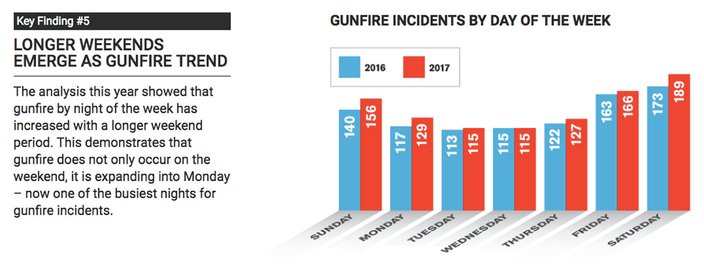
April 05, 2018
The 2017 National Gunfire Index is out, and includes some interesting findings about where and when people are firing guns.
ShotSpotter Inc., a California firm which uses acoustics-based, GPS-equipped technology to detect gunshots in 87 U.S. cities, published the comprehensive study.
The company reported 86,665 gunfire incidents in 2017 – an increase of nearly 16 percent in those cities. On average, that's nearly 10 incidents per hour and more than 237 per day across its network.
The number of gunshot incidents peaks between 10 and 11 p.m., followed by the 11 p.m. and midnight period, and then declining in the overnight hours. The lowest number of incidents are reported from 6 to 10 a.m.
 Source/ShotSpotter Inc.
Source/ShotSpotter Inc. Source/ShotSpotter Inc.
Source/ShotSpotter Inc.By region, the Northeast (including Pennsylvania and New Jersey) sees the fewest gunshot incidents per square mile: 78. The highest is in the midwest with 358 incidents, followed by the South (204) and West (110).
The study also found that the West leads the list in average number of gunshots per incident with 3.9, followed by the South (3.7), the Midwest (3.5) and the Northeast (3.3). The average was 3.7.
The report notes that because data in the index was taken only from areas covered by ShotSpotter systems, conclusions drawn about cities outside the coverage areas may not be valid. The findings are shared with communities as well as federal, state and local law enforcement agencies.